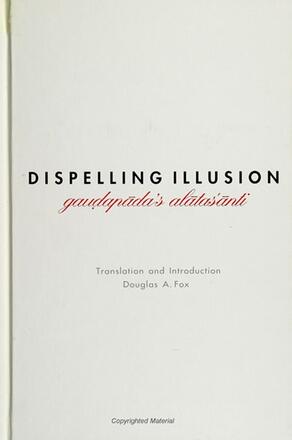
Dispelling Illusion
Gauḍapāda's Alātasānti with an Introduction
Alternative formats available from:
Description
This book sets Gauḍapāda in historical context and develops a commentary that makes the meaning and significance of the Alātasānti text clear. In the Alātasānti , Gauḍapāda uses terms made familiar by Buddhism in order to expound his Vedantic philosophy. It places him at the watershed between Mahāyāna Buddhism and Vedanta.
Among the important issues discussed are Gauḍapāda's radical doctrine of non-production (ajati), that is, the view that despite appearances nothing is ever actually brought into existence; his notion of the illusory nature of sensory experience; his conviction that reality is "not two" (and certainly not more than two); his theory of knowledge; and the "touchless yoga" he hoped would dispel our illusions about ourselves and our world. His logic and the content of his arguments are examined critically.
Douglas A. Fox is David and Lucille Packard Professor of Religion at The Colorado College.
Reviews
"This is a very useful and valuable work. The topic is a central one in Indian philosophy, yet not many books and none in recent times, have ventured to explore it. The author does a persuasive job, especially given the controversial nature of the topic. The book's chief merit is its clear and readable style. The format clearly elucidates the Ajativada of Gaudda through critical and historical introduction, summaries, translations and commentary. This is a work which will not only draw general readers who are interested in Indian philosophy but also serious scholars who are concerned about textual interpretations. The translation of the text is very well done, both in terms of readability and authenticity. " -- Deen K. Chatterjee, University of Utah